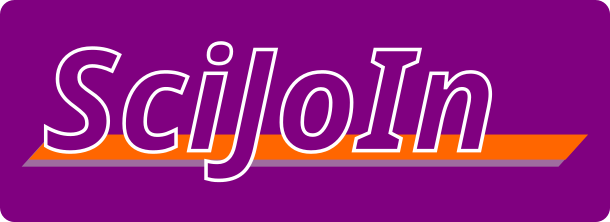Population Dynamics and the Logistics Growth Model: an exploration using a Virtual Laboratory
DOI:
10.52832/jesh.v3i4.240Keywords:
Ecological Simulation, Population Modeling, Verhulst ModelAbstract
Population ecology is a fundamental area of Biology that seeks to understand how populations of organisms evolve and interact with their environment. This article aims to present the Virtual Biology Lab environment to assist in the teaching and learning process of population growth content. With this tool, it is possible to study population ecology through simulations with biologically realistic data that help to understand how different parameters affect population dynamics in a simulated environment. Exploratory research was used with a bibliographic review on websites, books and articles to familiarize ourselves with the tool covered in this work. Furthermore, we brought two real-world examples involving the rabbit and fish population. It is possible to highlight that the interactivity in the parameters and the immediate return of data can enable teachers and students to explore different situations during the study of population ecology and the logistical growth model.
Downloads
Metrics
References
Ávila, B., Amaral, Érico M. H., & Tarouco, L. (2013). Implementação de Laboratórios Virtuais no metaverso OpenSim. Revista Novas Tecnologias Na Educação, 11(1). https://doi.org/10.22456/1679-1916.41712
Bassanezi, R. C. (2002). Ensino-aprendizagem com modelagem matemática: uma nova estratégia. Editora Contexto.
Bonatto, A., Barros, C. R., Gemeli, R. A., Lopes, T. B., & Frison, M. D. (2012). Interdisciplinaridade no ambiente escolar. IX ANPED SUL, 9, 1-12.
BRASIL. Ministério da Educação. Base Nacional Comum Curricular. Brasília: MEC, 2018.
Costa, M. S. S. (2006). Fundamentos De Ecologia Teórica. Minha Editora.
Gonçalves, S., Francisco, & Cavalcante, E. (2021). O uso do laboratório virtual como estratégia para a abordagem investigativa no ensino de biologia. #Tear: Revista de Educação, Ciência E Tecnologia, 10(2). https://doi.org/10.35819/tear.v10.n2.a5297
Hanazaki, N. (2009). Introdução À Ecologia. Biologia - Ead - Ufsc.
Leite, M. B. F., Silva, G. H. J. D., & Sousa, L. F. D. (2011). Modelos matemáticos para o crescimento da população do estado de São Paulo e a exploração de diferentes taxas de crescimento. Ciência & Educação, 17(04), 927-940.
Lopes, M. M. (2013). Sequência didática para o ensino de trigonometria usando o software GeoGebra. Bolema, 27(46), 631–644. https://doi.org/10.1590/s0103-636x2013000300019
MACHADO, L. S. (2021). Modelagem de sistemas estruturados etariamente com equações acopladas : uma aplicação numérica à ecologia. Ufpe.br. https://repositorio.ufpe.br/handle/123456789/43388
Odum, Eugene P., & Barret, Gary W. (2007). Fundamentos de ecologia. (5. ed.). São Paulo: Cengage Learning.
Scheffer, N. F. ., Machado Corrêa, R. ., & Zawierucka Bressan, J. (2008). A Capacidade Argumentativa e as Narrativas Matemáticas nas Aulas de Matemática com Tecnologias. Boletim GEPEM, (53). Recuperado de https://periodicos.ufrrj.br/index.php/gepem/article/view/328
Silva. (2020). Equações diferenciais ordinárias e suas aplicações. https://doi.org/10.11606/d.55.2020.tde-09112020-184716
Stewart, J. (2013). Cálculo volume 2. 2013.
Valente, J. A. (1999). Informática na educação no Brasil: análise e contextualização histórica. O computador na sociedade do conhecimento. Campinas: UNICAMP/NIED, 1-13.
Downloads
Published
How to Cite
Issue
Section
License
Copyright (c) 2024 Journal of Education, Science and Health – JESH

This work is licensed under a Creative Commons Attribution-NonCommercial 4.0 International License.
































